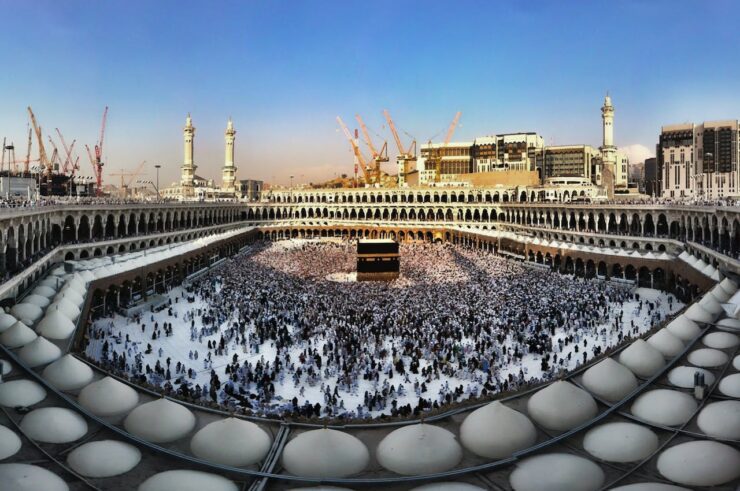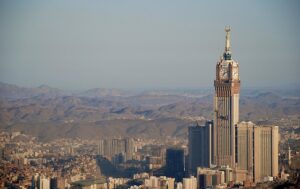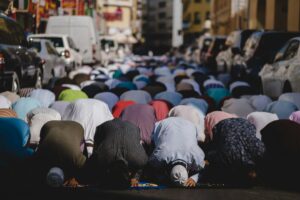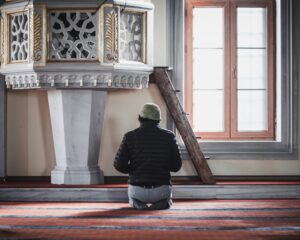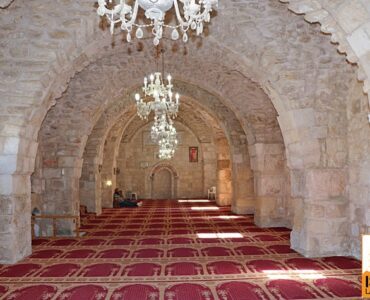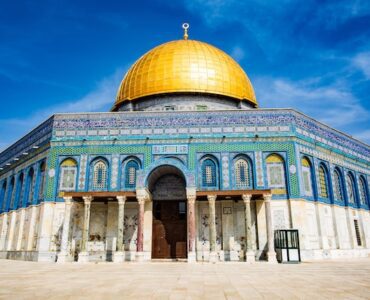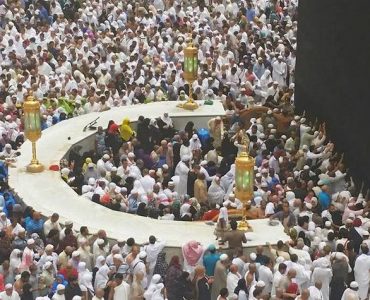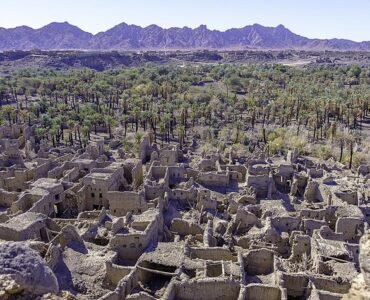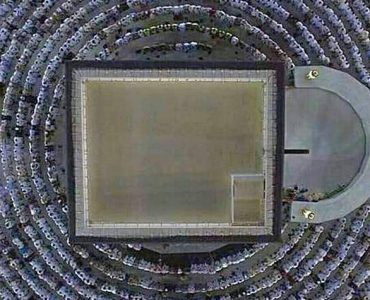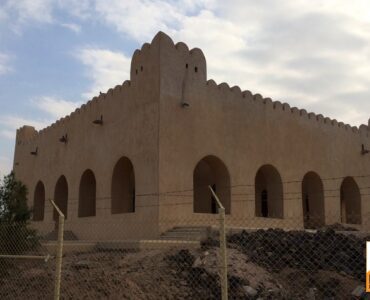Islam, a religion deeply rooted in spiritual practices, places immense significance on the act of Ziyarat – to pilgrimage to sacred sites in Islam.
Among them, the tour of Makkah stands as the focal point, beckoning millions of Muslims annually to embark on a journey of faith and devotion.
Nestled in the heart of the Arabian Peninsula, Makkah holds a special place in the hearts of Muslims worldwide.
It is the birthplace of Prophet Muhammad SAW, the final messenger of Islam, and the site of the holy Kaaba, the most sacred structure in the Islamic faith.
Islamic Landmarks aims to serve as a comprehensive guide for those seeking a profound spiritual experience through Makkah Ziyarat Tours comprising of Hajj and Umrah, historical tours, group trips and private tours and sightseeing.
From historical insights to practical tips, our exploration will navigate the rich tapestry of Makkah’s cultural and religious significance, offering readers a deeper understanding of the pilgrimage journey.
Historical Background of Makkah
Makkah’s Roots in Islamic History
To comprehend the sanctity of Makkah, one must delve into its historical roots of these holy places in Saudi Arabia. Makkah’s prominence dates back centuries, with the city being mentioned in the annals of Islamic history as the place where the Prophet Muhammad (PBUH) was born.
The city of Makkah is included in the vicinity of Makkah province, which includes Jeddah, Ta’if and Mecca. The Holy Kaaba is minutes away from the city, but it takes hours during the peak season of Hajj.
Role of Makkah in the Prophet’s Life
Makkah served as the stage for crucial events in the life of Prophet Muhammad (PBUH). From the first revelations on Mount Hira to the Hijra (migration) to Medina, Makkah witnessed pivotal moments that shaped Islamic history.
The Prophet Muhammad (PBUH) performed Umrah alongside his two thousand companions in 629 CE, within the vicinity of Makkah province.
Key Landmarks and Historical Events
Explore the landmarks that stand as witnesses to Makkah’s storied past. The Kaaba, originally built by Prophet Ibrahim and his son Isma’il, holds a central place.
At the same time, events like the Treaty of Hudaybiyyah and the conquest of Makkah underscore the city’s historical significance.
The Spiritual Tapestry
Understanding Makkah’s history is like unraveling a spiritual tapestry that weaves together the threads of faith, resilience, and divine intervention.
As we embark on Makkah Ziyarat Tours (group and private tours), acknowledging this historical backdrop enriches the pilgrimage experience, connecting pilgrims to the roots of their faith.
Ziyarat in Islam – Unveiling the Concept of Ziyarat
Ziyarat, in its essence, is a sacred journey undertaken by Muslims to visit and pay respects to significant religious sites and the resting places of revered figures in Islam. It comprises collective tours to the twin cities of Mecca and Madinah.
The Prophet’s (SAW) city, Madinah, is approximately four hours away from Makkah. But during the peak season of Ziyarat, it takes about five to six hours to travel.
This act of pilgrimage (tours) extends beyond a mere physical journey; it symbolises a spiritual connection and a profound expression of devotion.
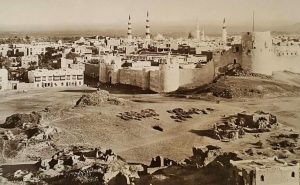

Spiritual Significance of Ziyarat
The concept of Ziyarat (tours to the holy sites within Makkah province) is deeply ingrained in Islamic teachings, emphasizing the importance of spiritual reflection, humility, and seeking closeness to Allah.
Muslims believe that visiting holy sites draws inspiration, renews their faith, and strengthens their bond with the divine.
Makkah’s Pinnacle in Ziyarat
While Ziyarat holds significance at various sacred locations, the pilgrimage to Makkah stands as the zenith of spiritual journeys for Muslims.
With its historical and religious importance, Makkah becomes a focal point for believers aiming to fulfill a fundamental pillar of their faith.
During the time of Hajj, tours of the local area temporarily stopped to incorporate millions of Muslims from all over the world in the vicinity of Haram.
Planning for Makkah Ziyarat Tours – A Guide to Makkah Ziyarat
Embarking on a Ziyarat tour to Makkah requires meticulous planning to ensure a seamless and spiritually enriching experience.
Here, we present a comprehensive guide to help readers navigate the journey gracefully and purposefully.
Travel Arrangements
Initiating the planning process involves selecting the most suitable mode of transportation because pilgrims will spend hours in the prayers and rituals. The most efficient transport will take them home safely and on time.
Considering factors such as budget, convenience, and travel restrictions is paramount, whether by air, road, or rail. Booking well in advance ensures smoother logistics for the pilgrimage.
Accommodation: Finding Tranquility
Choosing the right accommodation is pivotal for a restful and spiritually uplifting journey. Makkah offers a range of options, from hotels overlooking the Kaaba to more budget-friendly choices.
Proximity to the holy sites, amenities, and reviews from fellow pilgrims are essential considerations.
With the help of technology, one can easily pre-book the most suitable hotel that suits the finances you spent on tours of Haram. Some hotels offer free cancellation during the peak season of Ziyarat, but they can even charge a small amount upon emergency cancellation.
Best Time to Visit
Timing is crucial for Makkah Ziyarat Tours. Understanding the Islamic calendar, especially the months of Hajj, and considering personal preferences, weather, and crowd density aids in selecting the optimal time for the pilgrimage (tours) in Mecca and Madinah.
Each season of Hajj and Umrah in Makkah brings out a unique atmosphere, contributing to the overall experience. Saudi Arabia welcomes people from around the world for this purpose and appreciates tours to historic sites outside Mecca.
Embracing the Spiritual Journey
Beyond logistical considerations, pilgrims must prepare emotionally and spiritually for the Ziyarat of Mecca and tours to other sacred sites.
Engaging in prayers, seeking knowledge about the rituals, and maintaining a humble and open mindset contribute to a more profound connection with the divine during the pilgrimage.
By following this guide, readers can embark on their Makkah Ziyarat Tours equipped with the knowledge and preparedness needed for a spiritually transformative journey.
May the pilgrimage (tours) to Makkah and Madinah be a source of enlightenment, reflection, and profound connection with Allah.
Landmarks and Sacred Sites
Makkah’s landmarks and sacred sites form a tapestry of spiritual significance woven with the threads of history, faith, and devotion. Tours to different sites within Saudi Arabia are all you need; you can book them through private packages or add them to your Hajj and Umrah packages.
A wide range of hotels are available in Mecca, Jeddah, and Madinah; accommodating Mecca hotels near to Haram are the perfect way to relish the inevitable experience of your trip. You can make individual tours to sacred mosques like Quba, Umer, Ali, and Ayesha that hold religious significance.
The Kaaba and Masjid al-Haram: The Spiritual Epicenter
At the heart of Makkah’s spiritual landscape lies the Kaaba, a cuboid structure draped in a black silk and gold curtain known as the kiswah.
Believed to be built by the Prophet Ibrahim and his son Isma’il, the Kaaba serves as the focal point for Muslims around the world during their daily prayers.
Surrounding it is the grand Masjid al-Haram, an expansive mosque that envelops the Kaaba and accommodates millions of worshippers during prayer times.
The sheer magnitude of Masjid al-Haram and the serene aura together create an awe-inspiring experience for pilgrims.
Safa and Marwah: The Symbolism of Struggle
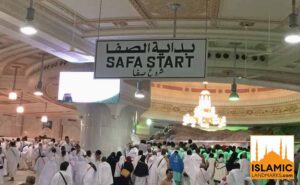

The hills of Safa and Marwah are integral to Makkah’s sacred geography. Pilgrims perform the Sa’i, the ritual of walking between these hills, emulating the actions of Hagar, the wife of Prophet Ibrahim, as she sought water for her son Isma’il.
This ritual symbolises perseverance, faith, and the rewards of unwavering trust in Allah. The panoramic view from Safa to Marwah encapsulates pilgrims’ profound journey of faith during their Ziyarat.
Mount Arafat and Muzdalifah: The Heights of Spiritual Reflection
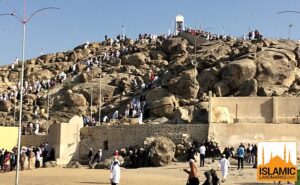

Venturing beyond Makkah, pilgrims embark on a journey to Mount Arafat, a place of immense spiritual significance.
It is here that Prophet Muhammad (PBUH) delivered his Farewell Sermon during his final pilgrimage. Standing on the plains of Arafat, Muslims engage in prayer, supplication, and contemplation, seeking forgiveness and purification of the soul.
Nearby is Muzdalifah, where pilgrims collect pebbles for the symbolic Stoning of the Devil ritual. Together, these sites serve as catalysts for introspection and spiritual rejuvenation. Spending the night in Muzdalifah holds much importance; usually, pilgrims stay up till late hours and repent and pray to Allah.
The Zamzam Well: A Source of Divine Blessings
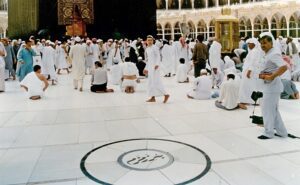

Woven into the fabric of Makkah’s history is the Zamzam well, a sacred source of water that traces its origins to the miraculous provision granted to Hagar and Isma’il.
Pilgrims partake in the blessed water of Zamzam, believing it to hold healing properties and divine blessings. The well symbolises the resilience of faith and the unwavering support provided by Allah in times of need.
Understanding the story behind Zamzam enhances the spiritual significance of this simple yet profound act of hydration.
Spiritual Journeys and Rituals
Exploring these landmarks isn’t merely a physical journey; it’s a spiritual odyssey that traces the footsteps of prophets and connects pilgrims to the core tenets of their faith.
The rituals performed at each site deepen the bond between the individual and the divine, making the Makkah Ziyarat experience a transformative and spiritually enriching pilgrimage.
As pilgrims tour to these sites during their Ziyarat, they are not just witnessing historical locations but actively participating in a profound and sacred narrative that spans generations.
They hope their footsteps echo the reverence and devotion that have resonated through the ages in this holiest of cities.
Rituals and Practices
The rituals and practices associated with Makkah Ziyarat form a sacred choreography, a dance of devotion and submission that connects pilgrims to the divine narrative of Islam.
Tawaf – Circumambulating the Kaaba
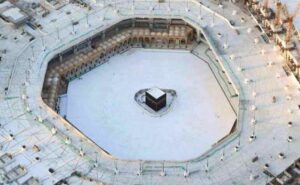

Tawaf, the ritual of circumambulating the Kaaba, stands as a central and symbolic act in Makkah Ziyarat.
Pilgrims, clad in seamless white ihram garments, move in a counterclockwise direction around the Kaaba, signifying the unity of the Muslim ummah and the eternal nature of Allah.
The rhythmic motion of Tawaf, repeated seven times, embodies the ceaseless devotion of believers and their orbit around the divine center of Islam.
Sa’I – The Journey Between Safa and Marwah
Sa’i retraces the steps of Hagar in her quest for water, symbolizing faith, perseverance, and trust in Allah’s providence.
Pilgrims walk seven times between the hills of Safa and Marwah, reflecting on the challenges faced by Hagar and her son Isma’il. Sa’i reinforces the belief that steadfastness in the face of trials is met with divine mercy and blessings.
Stoning of the Devil – Ritual at Mina
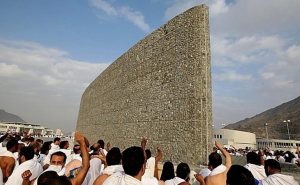

In the symbolic Stoning of the Devil, pilgrims reenact the actions of Prophet Ibrahim, who, according to Islamic tradition, was tempted by Satan but resisted the temptation by throwing pebbles.
Pilgrims collect stones at Muzdalifah and then, at Mina, throw seven pebbles at three pillars, representing Satan. This ritual symbolises the rejection of evil and the triumph of faith over temptation.
Standing at Arafat – The Culmination of the Pilgrimage
The pinnacle of the Hajj pilgrimage, and a significant component of Makkah Ziyarat, is the standing at Arafat.
Pilgrims gather on the plains of Arafat, where Prophet Muhammad (PBUH) delivered his Farewell Sermon, seeking forgiveness, mercy, and supplicating to Allah.
The day at Arafat is a profound moment of spiritual reflection, self-examination, and seeking closeness to the divine.
Rami – Symbolic Actions at the Jamarat
The act of Rami involves the symbolic Stoning of Satan at the three pillars in Mina. Pilgrims cast stones at the pillars, reflecting the rejection of worldly temptations and the commitment to a life guided by faith. The ritual emphasises the triumph of good over evil and reinforces the pilgrim’s dedication to living a righteous life.
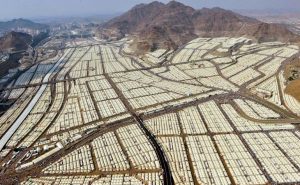

Tawaf al-Ifadah – The Return Circumambulation
Following the Stoning of the Devil, pilgrims perform the Tawaf al-Ifadah or the circumambulation of the Kaaba upon their return to Makkah.
This Tawaf signifies the completion of the Hajj pilgrimage and symbolises the pilgrim’s rebirth, having cleansed themselves of sin and emerged spiritually renewed.
Makkah Ziyarat Tour PDF
Islamic Landmarks has created a FREE to download Makkah Ziyarah PDF guide, Click here to download!
Significance of Rituals
These rituals and practices are not mere actions; they encapsulate the essence of submission, humility, and devotion.
Through Tawaf, Sa’i, Stoning of the Devil, standing at Arafat, Rami, and Tawaf al-Ifadah, pilgrims experience a profound spiritual journey that mirrors the trials and triumphs of prophets and reinforces the core tenets of Islam.
Each ritual carries deep spiritual significance, offering pilgrims a transformative experience that transcends the physical and enters the realm of the sacred.
They believe that the echoes of these rituals resonate in the hearts of the faithful, guiding them toward a life illuminated by faith and righteousness.
Cultural Experience – A Cultural Pilgrimage
Makkah Ziyarat is not just a religious pilgrimage; it is a cultural odyssey that transcends borders and connects believers through shared traditions, customs, and the universal language of faith.
Immerse in Local Customs and Traditions
Makkah Ziyarat extends beyond religious rituals, offering pilgrims a unique cultural tapestry woven with local customs and traditions.
As visitors step into the streets of Makkah, they are greeted by a vibrant mosaic of cultures and traditions that contribute to the rich cultural experience of this holy city.
The Diversity of Pilgrims
Makkah is a melting pot of cultures, attracting Muslims from every corner of the globe. The diversity among pilgrims manifests in the variety of languages spoken, clothing styles, and cultural practices.
The shared goal of performing Ziyarat creates a sense of unity among this diverse community, transcending cultural differences.
Traditional Dress: A Tapestry of Colors
The streets of Makkah are adorned with a kaleidoscope of traditional dresses representing different countries and regions.
Pilgrims wearing garments ranging from the flowing white robes of Arab nations to the intricately designed fabrics of South Asia create a visual spectacle, showcasing the global unity in diversity that Makkah epitomises.
Hospitality of the Locals
Makkah’s locals, recognizing the significance of Ziyarat, embody the essence of hospitality. It is customary for residents to open their homes and hearts to pilgrims, offering food, shelter, and assistance.
The hospitality experienced in Makkah extends beyond basic courtesy; it is a reflection of the deep respect for those undertaking the sacred journey.
Culinary Delights: A Gastronomic Journey
Exploring the local cuisine is an integral part of the cultural experience in Makkah. From the bustling markets to the small eateries tucked away in narrow alleyways, pilgrims encounter myriad flavors.
Traditional dishes such as Harees, Jareesh, and dates symbolise the culinary heritage of Makkah, adding a delightful layer to the overall cultural immersion.
Markets and Souks: A Shopper’s Paradise
Makkah’s markets and souks provide a unique shopping experience, allowing pilgrims to explore traditional crafts, textiles, and religious artifacts.
The bustling markets are alive with the chatter of vendors, the aroma of incense, and the vibrant colors of goods on display.
Purchasing souvenirs becomes a cultural exchange, with each item telling a story of Makkah’s heritage. Some vendors in Saudi Arabia even offer free edibles to the pilgrims, which is a beautiful way to gather virtue during the tours.
Cultural Events and Festivals
Makkah, a city deeply rooted in tradition, hosts cultural events and festivals that add an extra layer of vibrancy to the Ziyarat experience.
These events often include exhibitions, cultural performances, and gatherings that celebrate the diversity of the Muslim ummah, fostering a sense of community and shared identity.
Connecting with Local Traditions
Pilgrims have the opportunity to engage in local traditions, such as participating in communal prayers, joining in traditional dances, or attending cultural exhibitions.
These interactions provide a deeper understanding of Makkah’s cultural fabric and role as a global hub for Islamic culture and heritage.
As pilgrims navigate the cultural landscape of Makkah, they become not only participants in a spiritual journey but also ambassadors of cultural exchange, carrying the rich tapestry of Makkah’s cultural experience back to their homes around the world.
Challenges and Tips – Embracing the Journey
Makkah Ziyarat is a transformative and sacred journey, but it comes with its share of challenges:
Navigating Crowds: A Common Challenge
One of the primary challenges pilgrims face during Makkah Ziyarat is navigating through large crowds, especially around the Kaaba and during key rituals.
The sheer volume of worshippers can be overwhelming, but with strategic planning and mindfulness, pilgrims can mitigate the impact of crowds.
Tips
- Plan Off-Peak Visits: Choose non-peak hours for rituals to minimise crowd density.
- Stay Patient and Calm: Composure and patience are crucial in crowded areas.
Accommodation Logistics
Finding suitable and affordable accommodation close to the holy sites can be a challenge, especially during peak seasons.
The demand for lodging is high, and pilgrims may face difficulties securing convenient places to stay. Booking a hotel in the closest vicinity to Haram is a top priority among all pilgrims as it minimizes the hefty hours of travel time.
Tips
- Book Early: Secure accommodations well in advance to ensure proximity to the holy sites.
- Consider Group Bookings: Group bookings can provide cost-effective and convenient options.
Weather Conditions
Makkah experiences extreme temperatures, and pilgrims, particularly those unaccustomed to the climate, may find it challenging to cope with the heat.
Tips
- Dress Appropriately: Wear light, breathable clothing and a wide-brimmed hat to shield from the sun.
- Stay Hydrated: Carry a water bottle and stay well-hydrated, especially during outdoor rituals.
Language Barriers
Given the diverse international gathering, language differences can pose a challenge for effective communication and navigation.
Tips
- Learn Basic Phrases: Familiarise yourself with common Arabic phrases to facilitate communication.
- Use Translation Apps: Smartphone translation apps can be handy for quick translations.
Financial Planning
Managing expenses and ensuring a smooth financial journey can concern pilgrims, particularly those on a tight budget. The expenses may vary for adults and children; budget Umrah packages might be a good option for this.
Tips
- Set a Budget: Establish a realistic budget for the entire trip, including accommodation, food, and transportation.
- Exchange Currency in Advance: Exchange currency beforehand to avoid last-minute hassles.
Health Considerations
The physical demands of rituals, combined with the climate, may impact the health of pilgrims, leading to fatigue or other health issues.
Tips
- Prioritise Health: Get regular check-ups before the journey and follow medical advice.
- Rest Adequately: Ensure sufficient rest between rituals to prevent exhaustion.
Spiritual Focus Amid Distractions
In the midst of the crowds, rituals, and the hustle and bustle, maintaining a deep spiritual focus can be challenging for some pilgrims.
Tips
- Mindful Practices: Incorporate moments of mindfulness and reflection into daily rituals.
- Engage in Quiet Times: Find serene spots for personal prayer and contemplation.
With thoughtful planning, resilience, and a positive mindset, pilgrims can navigate these challenges and focus on the spiritual essence of their pilgrimage.
Remember, the challenges are part of the journey, contributing to Makkah Ziyarat’s overall growth and experience.
Summary – Makkah Ziyarat Tours
With its challenges and triumphs, Makkah Ziyarat and tours to other sacred sites emerge a transformative soul journey—a sacred odyssey fostering spiritual renewal and personal growth.
May the lessons and blessings from Makkah resonate in the hearts of pilgrims and guide them on a path illuminated by faith and righteousness

